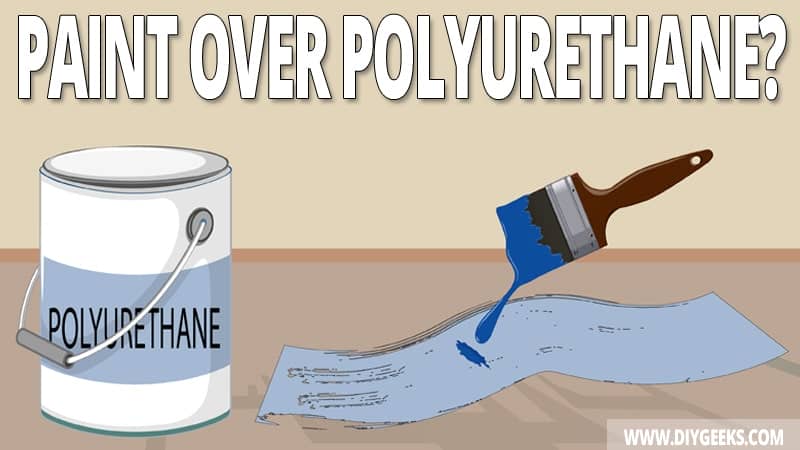Polyurethane is a topcoat that seals the surfaces from moisture, water, and scratches. You can paint over polyurethane if you degrease, sand, and prime the sealer finish first.
To paint over polyurethane, clean the finish, sand or degloss the finish, repair the surface, apply primer, and apply the paint.
Sanding creates tiny pores (holes) in the polyurethane finish that paint can penetrate and adhere to. A primer will act as an undercoat and help the new finish stick better.
Note: Remove the polyurethane finish completely to get better paint penetration and adhesion.
Does Paint Adhere over Polyurethane?
Paint doesn’t adhere over polyurethane directly because the sealer forms a hard and moisture-resistant film that prevents liquid penetration (including paint).
Paint must penetrate a surface to stick, but since the moisture-resistant coating of the polyurethane prevents penetration, the paint can’t stick.
Polyurethane forms a glossy moisture-resistant layer once it dries. If you apply paint over it, it will slide off the glossy finish — this makes it hard for the paint to stick over a sealer.
You must sand, prime, or remove (some parts) of the polyurethane finish to allow a new finis to stick over it. Sanding will remove the glossy finish while the primer will create an undercoat for the new finish to stick to.
Can You Paint Over Polyurethane Without Sanding or Priming?
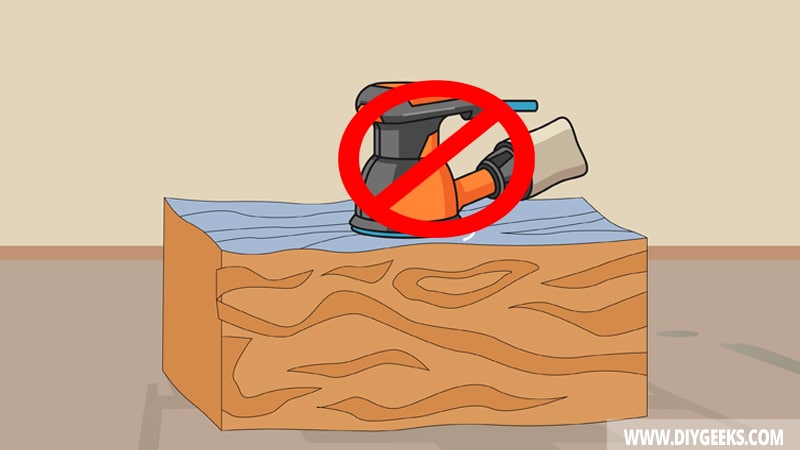
You can’t paint over polyurethane without sanding or priming as the paint will slide off or peel off if you do. The paint might stick for a few days, but it will eventually peel off.
The purpose of sanding is to remove the glossy layer of the sealer and create tiny holes in the finish for the paint to penetrate into. The purpose of the primer is to create an undercoat for the new finish to stick to.
If you paint over polyurethane without sanding, the following things will happen.
- Poor adhesion.
- The new finish will get affected (removed) by moisture.
- Poor durability.
- The new coating will turn sticky or tacky.
- You won’t be able to seal the finish.
- You will have to remove the finish.
How To Paint Over Polyurethane?
To paint over polyurethane, do the following things.
- Clean the Finish.
- Sand or Degloss the Finish.
- Repair the Surface.
- Apply Primer.
- Apply Paint.
- Seal the Finish (Optional)
The tools you need for this project are listed below.
- Medium and fine-grit sandpaper
- A scraper
- Degreaser or cleaning solvent
- Rags
- A brush or spray gun
- An oil-based primer
- A gallon of paint
- A pair of gloves
- Wood filler (optional)
- A sealer
1. Clean the Finish
Degrease and clean the polyurethane finish to remove dirt, dust, or debris that can prevent paint from penetrating or adhering
To clean the polyurethane finish do the following things.
- Use TSD (Trisodium Phosphate) or a cleaning solvent, such as vinegar or white spirits.
- Pour the solvent over the finish using a cloth.
- Wait 5 minutes.
- Use a dry rag to wipe the degreaser and stains off.
- Rinse the finish with clean water.
2. Sand or Degloss the Finish
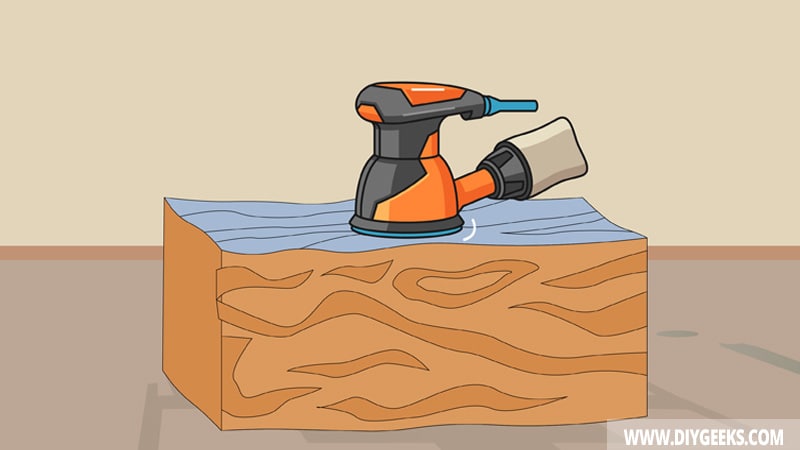
Sand the polyurethane finish with medium-grit sandpaper (100-grit) to remove parts of its finish and stubborn stains, imperfections, and dust nibs from the surface.
Use fine-grit sandpaper (220-grit) to even out the grain and smooth the surface. Don’t apply too much pressure while sanding as you can damage or remove the sealer (unless that’s your intention).
You can use a deglosser to remove the polyurethane glossy layer from the surface. Simply pour the deglosser into a clean rag, and use the rag to wipe the polyurethane finish, wait a few minutes, and the glossy finish will be removed.
If you want to remove the entire polyurethane finish, use coarse-grit sandpaper (40-grit) or paint-stripping paste.
3. Repair the Surface
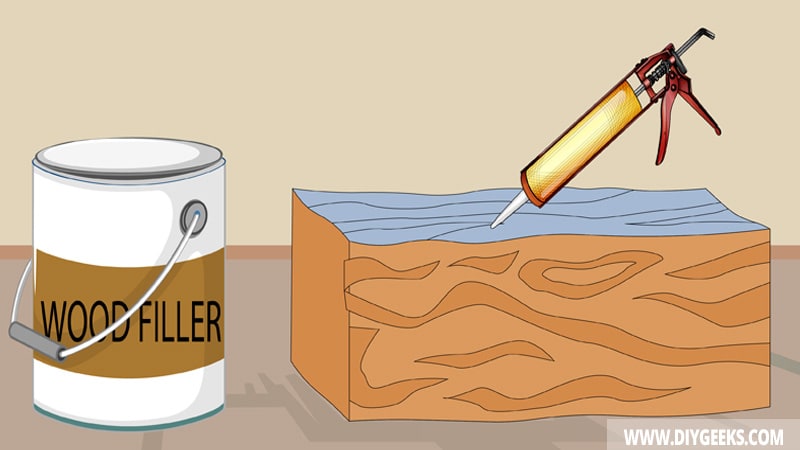
Repair and fill the cracks and holes in the polyurethane finish (if any). For wooden surfaces, use wood filler, caulk, plaster, drywall, or wood trim. For concrete and masonry surfaces, use concrete paste.
Note: This step is only if the polyurethane is already removed from the surface. If the sealer is still on the surface, remove or sand it before repairing the cracks and holes.
4. Apply Primer
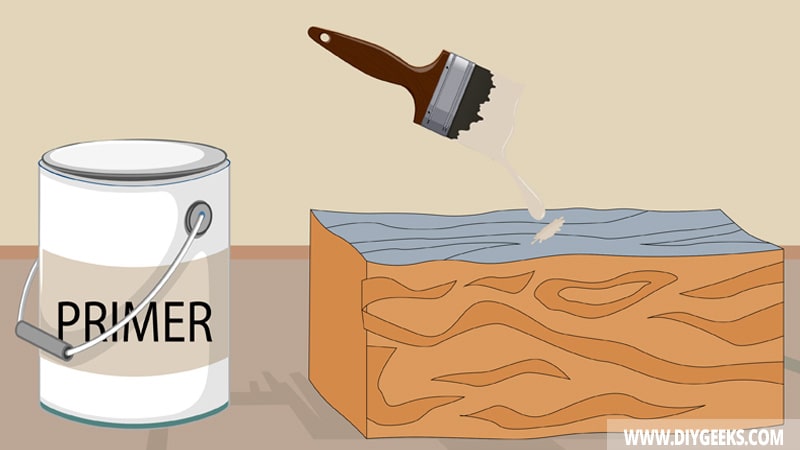
Apply 1-2 stain-blocking primer coats over the polyurethane finish. The primer coats cover the existing finish and create a textured coating for the new paint to adhere to.
Use oil-based primers over polyurethane as they have a high level of solvents that are compatible with each other.
5. Apply Paint
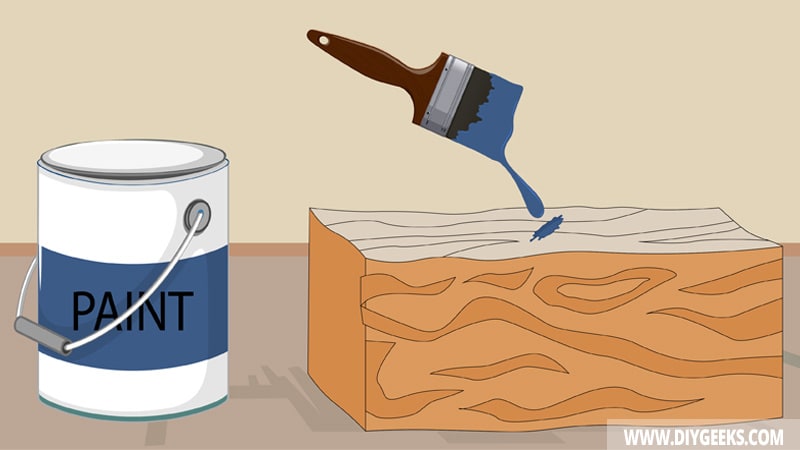
Apply three (3) thin paint coats over the polyurethane using a paint brush, roller, or sprayer. Wait until one coat dries, wipe the excess, and apply the next coat.
You can use water-based and oil-based paint, but we recommend acrylic paint as it has better adhesive qualities and a more colorful finish.
Seal the new paint finish with a moisture-resistant sealer to protect it from water, moisture, scratches, and weather elements.
Do You Have To Remove Polyurethane Before Painting Over It?
You don’t have to remove polyurethane before painting over it — but removing it will improve the adhesion and the quality of the finish. However, instead of removing you can sand the glossy layer of the sealer and apply primer before painting it.
If the finish is defective, wet, or peeling off, you must remove it as painting over it will cause the new finish to peel off too.
You must remove the glossy top layer of the oil-based polyurethane as it will prevent good paint adhesion — use a “deglosser” or sand it off to remove it.
You can also just remove a few parts of the polyurethane finish before painting it. This process is known as “stress sanding” where you sand (or remove) parts that will experience heavy use. The paint will penetrate and stick over these parts.
Which Paint Types Can You Apply Over Polyurethane?
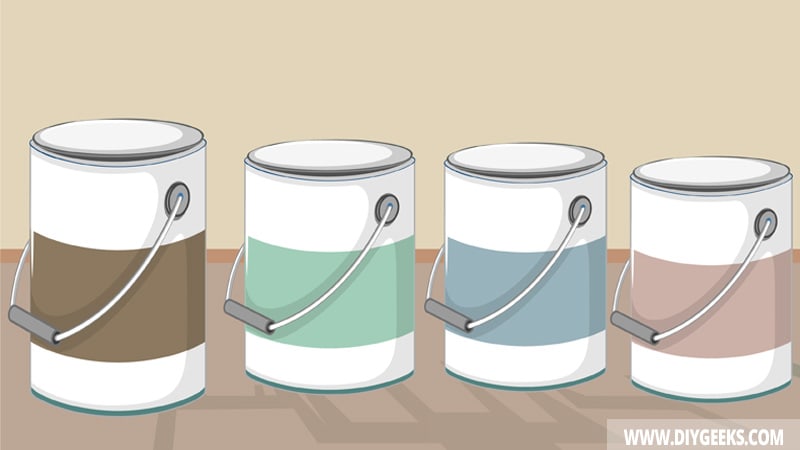
The paint types you can apply over polyurethane are listed below.
1. Chalk Paint
You can apply chalk paint over polyurethane as it has impressive adhesive qualities and sticks over most surfaces. But, you must sand off the sealer’s glossy top coat before applying it.
2. Enamel Paint
You can apply enamel paint over polyurethane since it’s oil-based. But, you must prime the sealer first.
3. Latex Paint
You can use latex paint over polyurethane since the paint is flexible and will cope with a sealer well. But, you must apply a primer first.
4. Spray Paint
You can use some spray paints over polyurethane, while you can’t use some others. Some sprayers contain different additives that won’t stick over a sealed surface. For instance, sprayers with high levels of silicone won’t stick.
5. Acrylic Paint
You can use acrylic paint over polyurethane as the paint has impressive bonding qualities and will stick over most surfaces. But, you must sand and prime the sealer first.
6. Milk Paint
You can apply milk paint over water-based polyurethane. Milk paint has a formula with just water and color, it doesn’t have binders and adhesives. So, it wouldn’t stick well to an oil-based sealer.
Related Read: Can You Apply Polyurethane Over Old Polyurethane?
